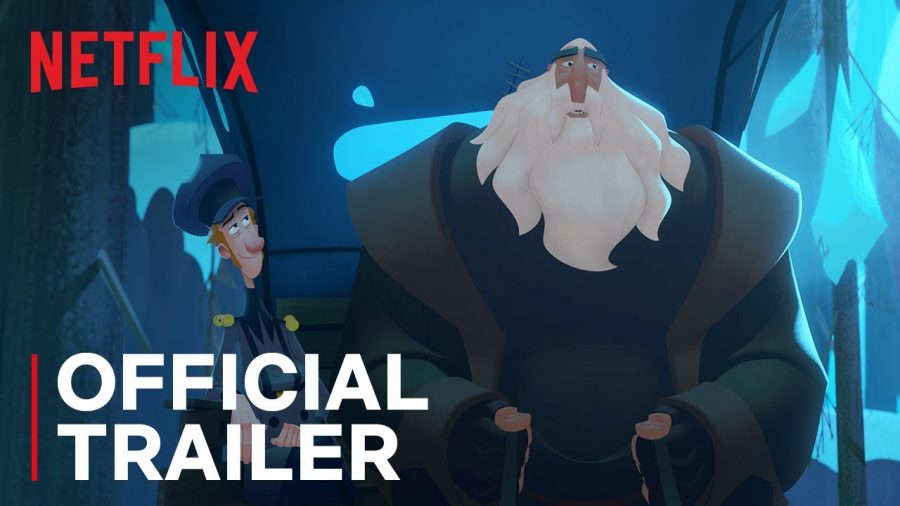Imaginative Images
The Importance of Ambitious Animated Features
Netflix, press release, fair use
Netflix’s “Klaus”, directed by Serigo Pablos was released on November 15 2019.
In April of 2015, a short teaser for an animated film about Christmas titled “Klaus” had been released to the internet to much acclaim, using animation techniques comfortingly familiar yet seemingly long forgotten. It was unknown if the teaser would ever become a fully realized film. The fate of the project remained unclear until 2017 when Netflix announced it had decided to produce the movie. Then, on October 7th of 2019, the trailer for the finished film had officially been released, and the preview for Netflix’s “Klaus” left animation fans speechless.
The film was conceived and directed by seasoned animator Sergio Pablos, whom of which has had a hand in the creation of such classics as Disney’s “Tarzan” and “Hercules”.
“Klaus” is a traditionally-animated flick chronicling the fictional tale of Santa Claus and how he came to be, with the help of a postman and a sleepy little town near the Arctic Circle. The premise alone is not anything particularly unique or original, but the attention-grabbing force for the film is the medium in which it is being produced.
In the medium of animation, traditionally drawn features once dominated theaters and stole the hearts of countless moviegoers. It is a method of filmmaking in which movies are created by artists drawing what is called “frames”, which entails drawing a pose and changing the position of a given figure each frame to achieve the illusion of movement. Walt Disney Pictures had been the leading producer of these films, with little competitors in the West.
In the 90s and early 2000s however, the increasing popularity of Pixar, a studio that had been creating animated movies using computers (a process referred to as CGI), saw the interest in traditionally drawn films dwindle among studios. Many companies saw more promise in creating CG films as they were cheaper and ‘newer’. Hand-drawn filmmaking seemed to be a thing of the past following the box office success of James Cameron’s technically wondrous film “Avatar”, which had overshadowed Disney’s traditionally-animated “Princess and the Frog” the same year.
A reoccurring criticism among filmgoers is that instead of utilizing the medium of animation to its fullest extent, major animation companies instead aim to simulate real-life and create realistic-looking depictions of hair or water. Among the most commonly criticized animation studios are Pixar, Disney, and Dreamworks. While the three studios are inarguably headed by teams of talented animators, it is becoming increasingly difficult to discern the difference between films distributed by each of them. The styles of filmmaking seem to blend, and certain films leave critics questioning whether or not the medium had to be used to tell the story in ways live-action could not.
Such films as “Tangled” or “Frozen”, though not considered bad in any sense, begin to seem as though the only justification their respective studios have for animating them at all is for the pure aesthetic of it.
Despite all signs saying otherwise, hope is not lost for imaginative and unique animated films. Sony Pictures Animation had released “Cloudy with a Chance of Meatballs” in 2009, which was written and directed by Phil Lord and Chris Miller, and starred Bill Hader, Anna Faris, and Andy Samberg. The film was a critical and financial success. It was praised for its humor and its animation, which moved and came alive in the same ways traditionally drawn rubber-hose films did in the 1920s. In the years following, similarly imaginative features such as “Hotel Transylvania” and “The Lego Movie” were released, which had reinvigorated the critical perception of completely CG features.
The catalyst to the ongoing argument of whether or not CG films are superior to hand-drawn films came in 2018 when audiences across the world were stunned at the mere existence of “Spider-Man: Into the Spider-Verse”. The film, being Sony Pictures Animation’s fifteenth animated feature, was one of a kind, blending elements of both traditional and computer-generated animation techniques. It gave audiences pure eye candy in ways that can only be achieved through animation. In an industry oversaturated with studios attempting to imitate real life with their computer effects, “Spider-Verse” took advantage of what animation has to offer, and in doing so earned itself an Oscar win for Best Animated Feature.
Netflix’s “Klaus” hopes to revitalize hand-drawn animation, and upcoming films such as Warner Brothers’ “Scoob!” and Sony’s sequel to the critical success that was “Spider-Verse” are unafraid of embracing their own cartoony-ness in an atmosphere almost bloated with much of the same content. They promise to excite and charm audiences as they hit theaters in the coming years. These films prove that the animation industry can be treated as the unique medium of filmmaking that it is and that truly innovative and imaginative concepts can be displayed through any form of film.
“Klaus” stars Jason Schwartzman and J. K. Simmons and is available to stream on Netflix as of November 15, 2019.

Taylor Frye, Class of 2022, is a new staff member of the Green Wave Gazette as of her sophomore year. She is an avid fan of movies and writing and wishes...


